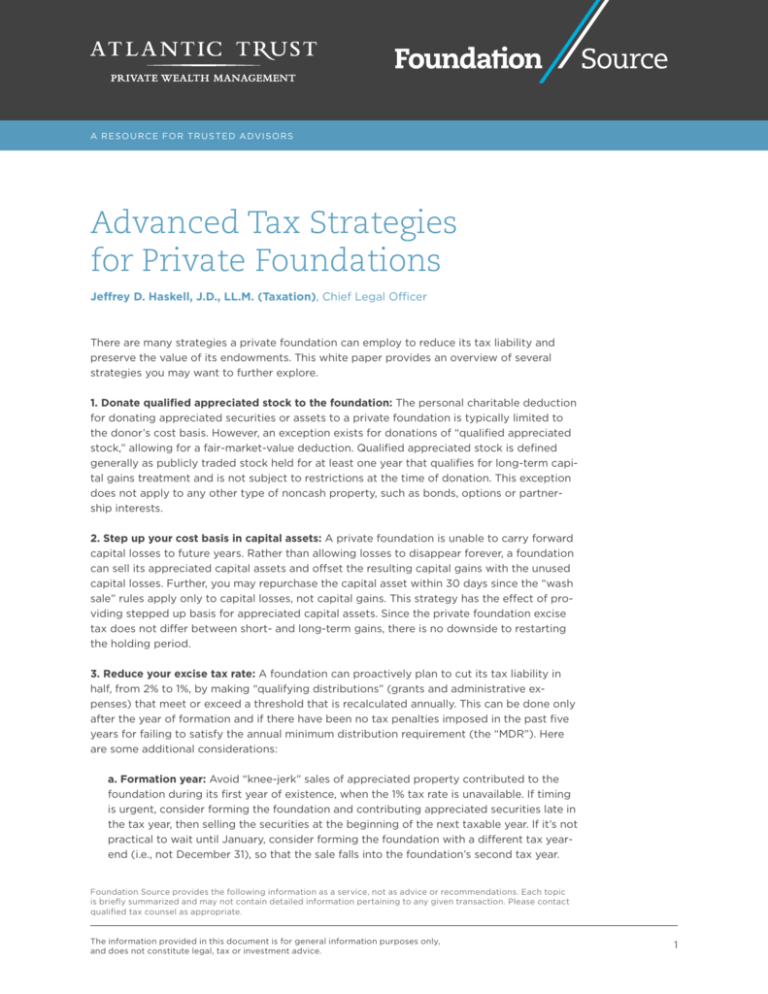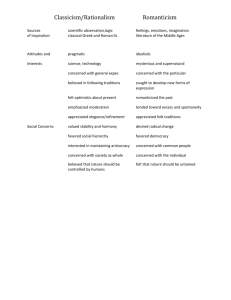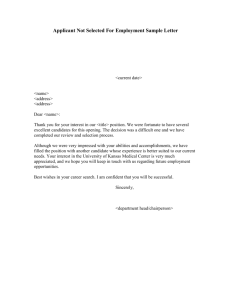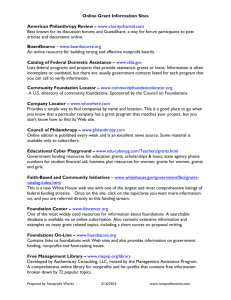
A R E SO U RC E FO R TR U S TED ADVI SO RS
Advanced Tax Strategies
for Private Foundations
Jeffrey D. Haskell, J.D., LL.M. (Taxation), Chief Legal Officer
There are many strategies a private foundation can employ to reduce its tax liability and
preserve the value of its endowments. This white paper provides an overview of several
strategies you may want to further explore.
1. Donate qualified appreciated stock to the foundation: The personal charitable deduction
for donating appreciated securities or assets to a private foundation is typically limited to
the donor’s cost basis. However, an exception exists for donations of “qualified appreciated
stock,” allowing for a fair-market-value deduction. Qualified appreciated stock is defined
generally as publicly traded stock held for at least one year that qualifies for long-term capital gains treatment and is not subject to restrictions at the time of donation. This exception
does not apply to any other type of noncash property, such as bonds, options or partnership interests.
2. Step up your cost basis in capital assets: A private foundation is unable to carry forward
capital losses to future years. Rather than allowing losses to disappear forever, a foundation
can sell its appreciated capital assets and offset the resulting capital gains with the unused
capital losses. Further, you may repurchase the capital asset within 30 days since the “wash
sale” rules apply only to capital losses, not capital gains. This strategy has the effect of providing stepped up basis for appreciated capital assets. Since the private foundation excise
tax does not differ between short- and long-term gains, there is no downside to restarting
the holding period.
3. Reduce your excise tax rate: A foundation can proactively plan to cut its tax liability in
half, from 2% to 1%, by making “qualifying distributions” (grants and administrative expenses) that meet or exceed a threshold that is recalculated annually. This can be done only
after the year of formation and if there have been no tax penalties imposed in the past five
years for failing to satisfy the annual minimum distribution requirement (the “MDR”). Here
are some additional considerations:
a. Formation year: Avoid “knee-jerk” sales of appreciated property contributed to the
foundation during its first year of existence, when the 1% tax rate is unavailable. If timing
is urgent, consider forming the foundation and contributing appreciated securities late in
the tax year, then selling the securities at the beginning of the next taxable year. If it’s not
practical to wait until January, consider forming the foundation with a different tax yearend (i.e., not December 31), so that the sale falls into the foundation’s second tax year.
Foundation Source provides the following information as a service, not as advice or recommendations. Each topic
is briefly summarized and may not contain detailed information pertaining to any given transaction. Please contact
qualified tax counsel as appropriate.
The information provided in this document is for general information purposes only,
and does not constitute legal, tax or investment advice.
1
Advanced Tax Strategies for Private Foundations
b. Prepare for the future: Any action that reduces your payout ratio (grants and qualifying expenses, divided by average assets) in the current year better positions the foundation to achieve the reduced rate over the next five years. Consider funding your foundation earlier in the year to increase average assets (the denominator). In the year of
formation, fund as close to the date of incorporation as possible. In any year, if you make
grants or incur qualifying expenses well in excess of the 5% MDR, it will increase your
payout ratio and make it more difficult to achieve the reduced tax rate in future years.
c. Post-formation years: It is difficult to qualify for the reduced tax rate in all years as
it would result in an ever-increasing payout ratio. Planning to meet the requirements in
alternate years—or in years when you expect to incur large capital gains—can allow you
to maintain your historic level of grants and qualifying expenses.
4. Maximize your personal charitable deductions: Except for contributions of cash and
qualified appreciated stock, contributions to private foundations are generally limited to
cost basis. That said, a foundation can elect for any tax year to provide its donors with a
fair-market-value deduction for noncash donations (e.g., real property) by meeting the
following conditions: It must make grants and other qualifying distributions during the year
equal to the total value of all noncash donations made to it that year. It must also satisfy its
usual MDR for the election year and the following year on an accelerated basis. This condition is often too onerous to be practical. But for foundations that have large carryforwards
of qualifying distributions from prior years, it may be possible to partially or fully meet this
condition by using carryforwards in lieu of actual granting. This is especially tax efficient if
the foundation has carryforwards that are about to expire after five years. If the foundation
also grants, in addition to the above, the value of all cash contributions received that year,
the donor may also use the higher AGI limit normally available for donations to public charities (50% for cash, 30% for noncash property) and even make a tax-free gift from an
IRA up to $100,000.
5. Preserve your endowment with Program-Related Investments: Many foundations choose
to satisfy their MDR’s by making Program-Related Investments instead of traditional grants.
A Program-Related Investment (“PRI”) is essentially a charitably motivated investment
that often takes the form of a zero or low-interest loan, secured or unsecured, to another
charitable organization. In the year a foundation makes a PRI loan, the funds advanced are
treated as though they were traditional grants for purposes of satisfying the MDR. In future
years, repayment of the loan principal will increase the MDR. Making PRI loans permits a
foundation to “recycle” its assets by making new loans using loan funds that have been
repaid. By contrast, when a foundation makes a grant, the foundation never expects to
recover those grant funds.
6. Consider the potential liquidity dilemma posed by certain investments: Non-productive
assets that do not generate income, such as real property and privately held stock, increase
your MDR by roughly 5% of the asset’s value, but do not provide the means to satisfy the
increased MDR. For example, land worth $2 million will add roughly $100,000 (5% of $2
million) to the foundation’s MDR. If the land produces no rental income to help satisfy the
MDR, the foundation may lack sufficient cash or other liquid assets to do so.
The information provided in this document is for general information purposes only,
and does not constitute legal, tax or investment advice.
2
Advanced Tax Strategies for Private Foundations
7. Eliminate capital gain with in-kind grants: If a foundation sells a significantly appreciated
capital asset, it will recognize a capital gain and be taxed at the usual 1% or 2% tax rate.
Instead of selling the appreciated asset, a foundation can make an in-kind grant of that
asset directly to a charity, thereby avoiding the capital gain. The value of the appreciated
asset at the time of the grant will be treated as the amount of the grant for purposes of
satisfying the foundation’s MDR.
The information provided in this document is for general information purposes only,
and does not constitute legal, tax or investment advice.
3
Advanced Tax Strategies for Private Foundations
ABOUT US
Atlantic Trust has partnered with Foundation Source, the nation’s largest provider of comprehensive support services for private foundations, bringing unparalleled knowledge and
expertise to clients across the country. The result: better-run, more effective foundations
and more enjoyable philanthropy.
Foundation Source provides its services to more than 1,100 family, corporate, and professionally staffed foundations nationwide, ranging in size from $500,000 to $500 million. The
company’s administrative services, online foundation management tools, and philanthropic
advisory services provide a total outsourced solution for private foundations, while Atlantic
Trust manages the foundation’s assets. This combined approach frees donors and families
to enjoy their philanthropy with total ease and confidence while we handle the details.
We work with both established foundations and individuals interested in starting a
new foundation.
CONTACT ATLANTIC TRUST
Atlanta .............................................. 404.881.3400
Houston ........................................... 832.941.5760
Austin ................................................. 512.651.7800
Newport Beach ............................949.660.0080
Baltimore ..........................................410.539.4660
New York ........................................ 212.259.3800
Boston .............................................. 617.357.9600
San Francisco ............................... 415.433.5844
Chicago .............................................312.368.7700
Washington, D.C. ......................... 202.783.4144
Denver ...............................................720.221.5000
Wilmington .....................................302.884.6775
www.atlantictrust.com
55 Walls Drive
Fairfield CT 06824
800.839.0054
www.foundationsource.com
Denver | Los Angeles | New York City | Philadelphia | San Francisco
South Florida | Washington D.C. | Winston-Salem
©2013 Foundation Source Philanthropic Services Inc. All rights reserved. v1013
The information provided in this document is for general information purposes only, and does not constitute legal, tax or investment advice.
Information is provided by Foundation Source. The views expressed here are those of Foundation Source and do not necessarily represent or
refl ect the views of Atlantic Trust.
4








